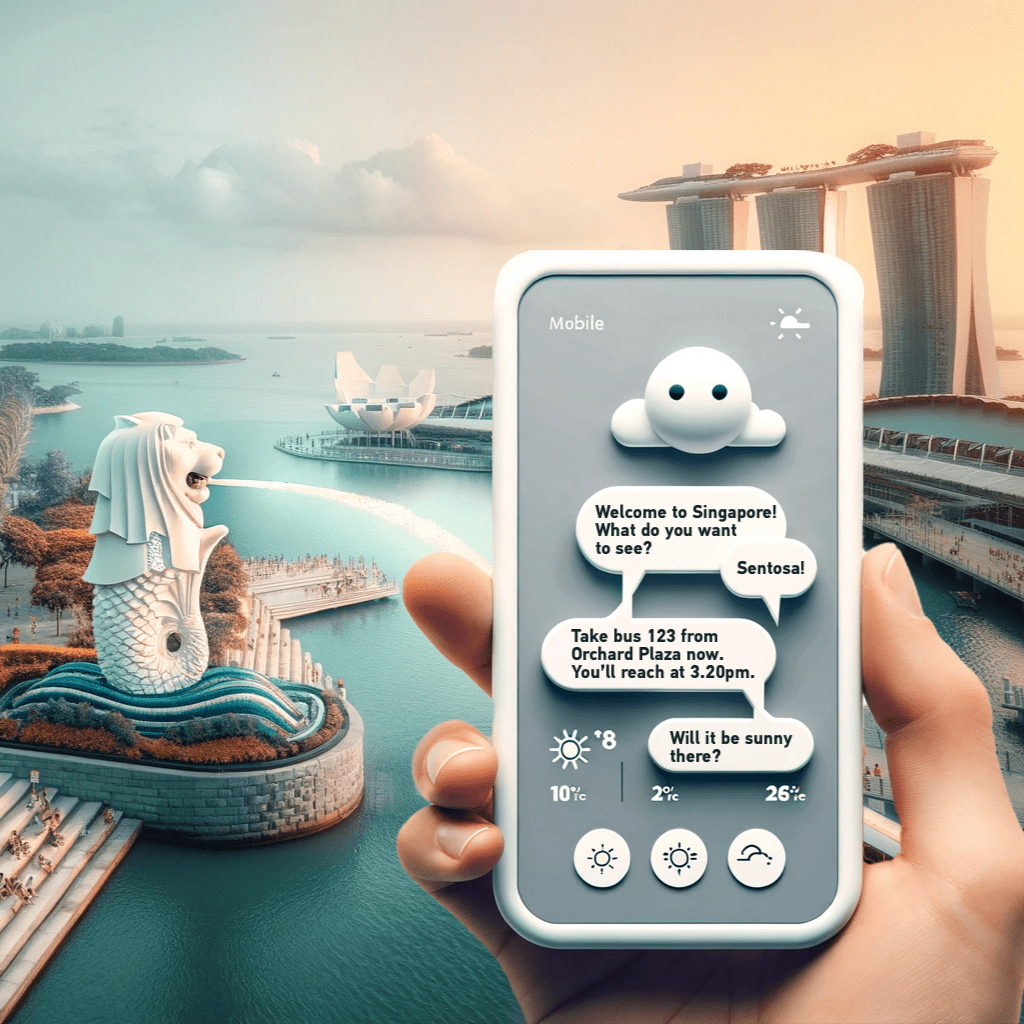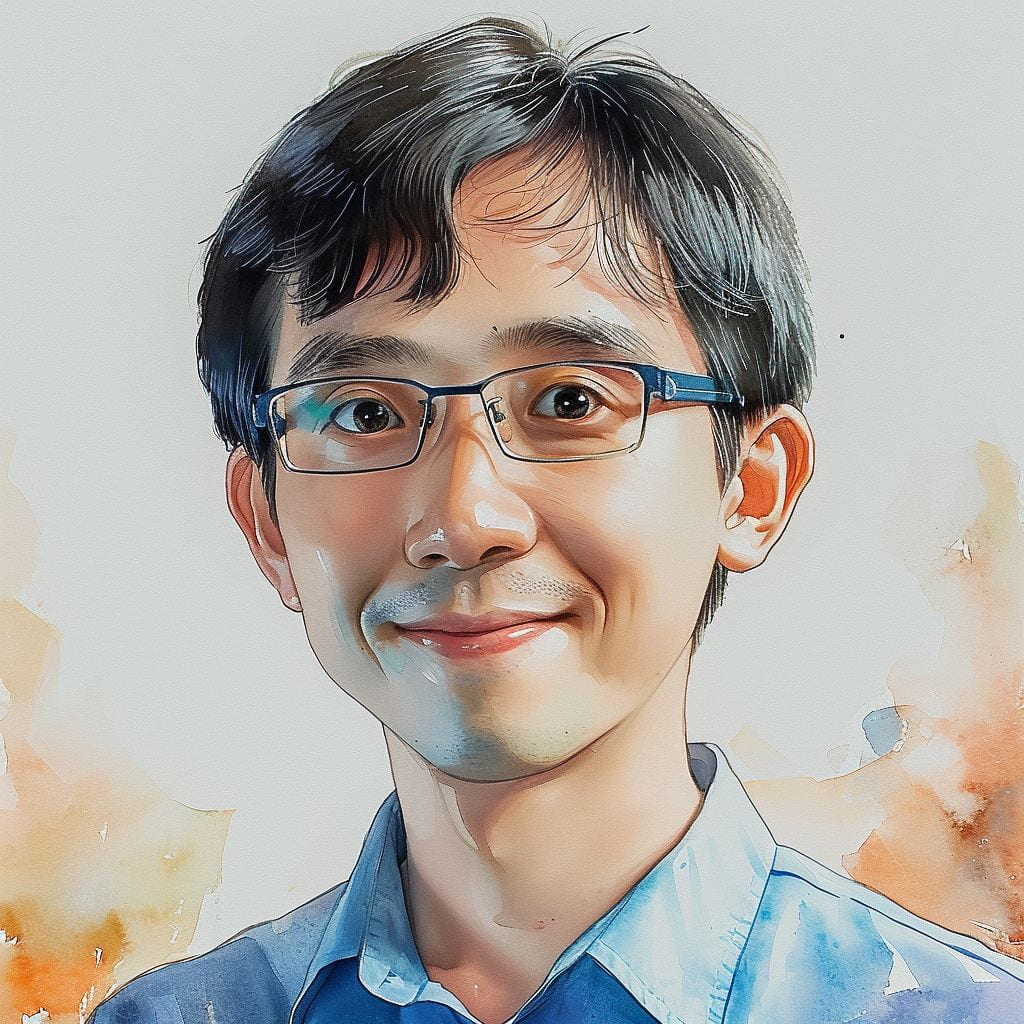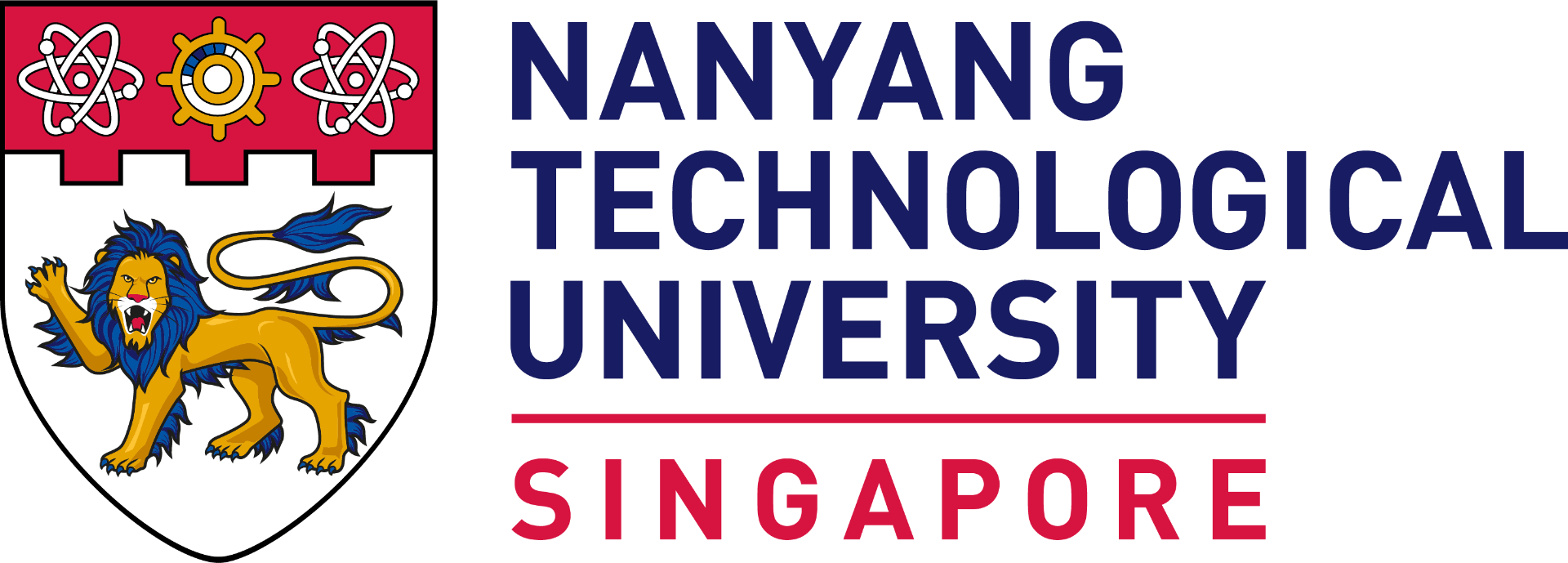See how NTU students from diverse fields experiment with artificial intelligence (AI) to push the boundaries of learning and redefine what is possible
by Tan Zi Jie, Kenny Chee + ChatGPT
IN COMPUTER SCIENCE & ENGINEERING
The big idea
When you’re on holiday, why call on a tour guide when you can tap a digital one and save yourself a fee?
Second-year Computer Science & Engineering students Glenda Yap, Yu Boxuan, and Roshini Pushparajan hit upon this idea of using AI to create the tour guide bot at an AI hackathon last July. Their idea bagged them the top prize.
As knowledgeable as a real travel guide, the bot can tailor a Sentosa tour to your preferences and even adjust its suggestions based on live weather conditions. Plus, it can tell you when the bus to Sentosa will arrive.

Visual: Tan Hui Qin + DALL-E
How AI helped

Computer science students (from left) Boxuan, Roshini and Glenda’s tour guide bot won the top prize in their school’s AI hackathon.
The tour guide bot is trained using OpenAI’s GPT-3.5, a Large Language Model (LLM) that can mimic human language patterns and give lifelike responses to any question. As clever as they are, LLMs are static as they are trained on datasets from 2022 and earlier.
Thanks to nifty coding and plenty of help from an interactive AI platform created by their computer science professor, the team also got their bot to pull in real-time information from a global weather data provider, as well as live bus arrival timings from the Singapore Tourism Board.
“If we did not use the LLM, we would have had to painstakingly code a simple chatbot that only spits out pre-written answers. Users will be restricted to getting basic and straightforward information,” says Boxuan.
“Our friends joke that AI is better than us and will replace our jobs. But we see it as a supportive tool that can enhance our capabilities, streamline tasks and help us come up with innovative solutions.”
– Boxuan
How it came about
The team programmed their digital tour guide using Nemobot, Assoc Prof Tan Chee Wei’s app that teaches computer science and AI through fun games and engaging quizzes.
“Nemobot gave us a simple framework to build our custom chatbot, as it has inbuilt LLM and other integrations that enable the bot to be constantly connected to authoritative data sources like OpenWeatherMaps. Each time a user asks if it’s raining, our bot will pull in live data and reply immediately,” Glenda says.
“As we had only completed our first year in computer science at that time, we had to learn more about LLMs and complex Javascript coding to create the bot, sometimes through YouTube videos. By combining our human-written code with dynamic prompt engineering, we were able to build a more functional chatbot than if we did either in isolation,” she adds.
What’s next
“Assoc Prof Tan challenged us to make a medical bot after the tour guide one. After around two months, we came up with something that can schedule appointments and send health tips. However, we learnt that accessing patient data requires partnerships with government medical bodies,” Roshini says.
Going forward, we want to marry both bots to help medical tourists in remote healthcare booking and facilitating their travel,” she adds.
How we used ChatGPT
We ran drafts of each of the stories in this cover feature through ChatGPT, using it to condense, rewrite or edit paragraphs and sentences.
😊: ChatGPT swiftly explained technical concepts and did so accurately as the lines containing them were fact-checked with the real experts.
🤣: For one iteration of the TCM article, it kept associating TCM with magic spells and potions. It was hilarious.
How we used DALL-E
It visualised the students’ AI projects from text prompts.
😊: DALL-E offers an endless array of styles; try “lofi vibes” to get charming, aesthetic visuals.

Kenny

Zi Jie
This story was published in the Jan-Feb 2024 issue of HEY!. To read it and other stories from this issue in print, click here.

